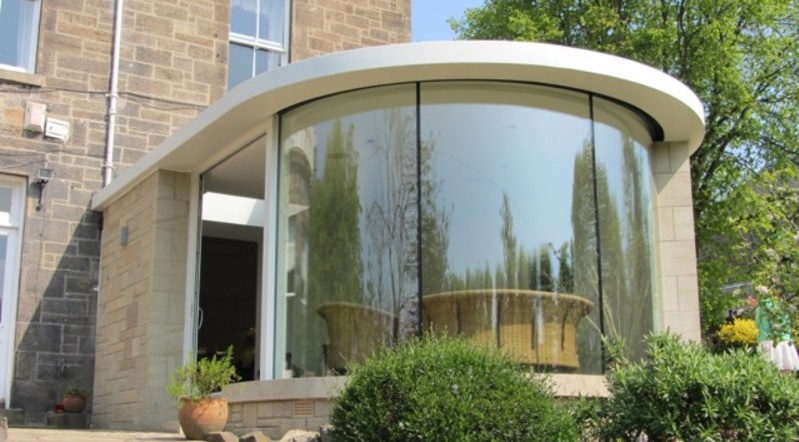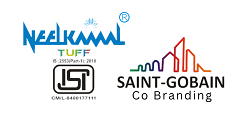
What is Bent or Curved Glass? Benefits and Applications
Curved glass is a captivating architectural element that adds elegance, dynamism, and visual interest to buildings and structures. From iconic skyscrapers to avant-garde interiors, curved glass has become synonymous with modernity and innovation in architecture and design. In this article, we will delve into the fascinating world of curved glass, examining its various types, uses, and the innovative techniques driving its evolution.
Understanding Curved Glass:
Curved glass is a specialized type of glass that has been shaped or formed into a curved or non-planar surface. Unlike traditional flat glass, which is typically produced in rectangular sheets, curved glass is manufactured using advanced techniques such as bending, slumping, or laminating. This allows for the creation of custom curves, arcs, and domes that can transform architectural spaces and create striking visual effects.
Types of Curved Glass:
Bent Glass: Bent glass is created by heating flat glass sheets to a high temperature and then bending or curving them to the desired shape using molds or rollers. This process, known as thermal bending, allows for the production of uniform curves with precise radii. Bent glass can be further processed to achieve complex shapes such as cylinders, cones, and spheres, making it ideal for architectural applications requiring custom curvature.
Curved Tempered Glass: Curved tempered glass is produced by heating flat glass sheets to a high temperature and then rapidly cooling them using air jets or quenching rollers. This process, known as tempering, creates internal stresses that give the glass increased strength and impact resistance. Curved tempered glass is commonly used in architectural glazing, such as curved windows, doors, and facades, where safety and durability are paramount.

Laminated Curved Glass: Laminated curved glass consists of multiple layers of glass bonded together with an interlayer material, typically a polymer such as polyvinyl butyral (PVB) or ethylene-vinyl acetate (EVA). This construction enhances the strength, safety, and sound insulation properties of the glass, making it suitable for applications requiring security or impact resistance. Laminated curved glass is often used in structural glazing, canopies, and skylights.
Curved Insulating Glass Units (IGUs): Curved insulating glass units are composed of two or more curved glass panes separated by a spacer and hermetically sealed around the edges. The space between the glass panes is filled with a desiccant or inert gas to improve thermal insulation and reduce condensation. Curved IGUs are used in fenestration systems, such as curtain walls and windows, to enhance energy efficiency and occupant comfort.
Curved Glass Blocks: Curved glass blocks, also known as glass bricks or glass pavers, are solid glass units with a curved or wave-like profile. They are commonly used in architectural applications such as walls, partitions, and flooring to create decorative features or provide natural daylighting. Curved glass blocks can be installed horizontally or vertically, allowing for creative design possibilities and light diffusion.
Uses of Curved Glass:
Architectural Glazing: Curved glass is widely used in architectural glazing to create dramatic facades, sweeping canopies, and curved curtain walls. Its ability to bend and shape light allows architects to design buildings with fluid forms and dynamic geometries that capture the imagination.
Interior Design: Curved glass is employed in interior design to define spaces, enhance spatial flow, and create visual interest. Curved glass partitions, balustrades, and feature walls add a sense of openness and transparency to interiors, while curved glass furniture and fixtures provide a contemporary aesthetic.
Automotive Design: Curved glass is an integral component of automotive design, used in windshields, sunroofs, and side windows to provide panoramic views and aerodynamic styling. Its strength, clarity, and impact resistance make curved glass an essential element in vehicle safety and aesthetics.
Retail Displays: Curved glass is utilized in retail displays and showcases to showcase products, create focal points, and draw attention to merchandise. Its sleek and modern appearance enhances the visual appeal of retail environments, elevating the customer experience and brand image.
Art and Sculpture: Curved glass is a popular medium for artists and sculptors seeking to create dynamic and expressive works of art. Its transparency, reflectivity, and malleability allow for the creation of captivating installations, sculptures, and architectural features that engage and inspire viewers.

Innovations in Curved Glass:
Digital Fabrication: Advances in digital fabrication technologies, such as computer-aided design (CAD) and computer numerical control (CNC) machining, have revolutionized the production of curved glass. These technologies enable architects and designers to create complex and intricate curved forms with unprecedented precision and efficiency.
Smart Glass Integration: Smart glass technologies, such as electrochromic and thermochromic coatings, are being integrated into curved glass systems to enhance functionality and performance. Smart curved glass can dynamically adjust transparency, tint, and thermal properties in response to environmental conditions or user preferences.
Parametric Design: Parametric design software allows architects and designers to explore iterative design processes and generate complex geometries with ease. By leveraging parametric design tools, curved glass structures can be optimized for structural performance, daylighting, and energy efficiency, pushing the boundaries of architectural innovation.
Bio-Inspired Design: Inspired by nature, bio-inspired design principles are being applied to curved glass structures to improve sustainability and resilience. Biomimetic techniques, such as fractal patterns and biomorphic forms, are being used to optimize the performance of curved glass facades and create environmentally responsive buildings.
3D Printing: Additive manufacturing technologies, such as 3D printing, are being explored for the production of custom curved glass components and assemblies. 3D-printed molds and formwork enable the creation of highly complex and organic shapes, expanding the design possibilities for curved glass in architecture and design.
Curved glass is a versatile and captivating architectural material that continues to push the boundaries of design and innovation. From iconic skyscrapers to avant-garde interiors, curved glass has become synonymous with modernity, elegance, and technological prowess in architecture and design. As advancements in glass manufacturing, digital fabrication, and smart technologies continue to evolve, curved glass will play an increasingly important role in shaping the built environment of the future, offering endless possibilities for creativity, expression, and sustainability.
Related Posts:





